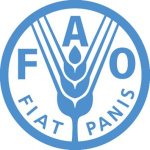- Industry: Agriculture
- Number of terms: 87409
- Number of blossaries: 0
- Company Profile:
Established in October 1945 with the objective of eliminating hunger and improving nutrition and standards of living by increasing agricultural productivity, FAO coordinates the efforts of governments and technical agencies in programs for developing agriculture, forestry, fisheries, and land and ...
A large thin-walled space within the ovule of the seed plant in which the egg and, after fertilization, the embryo develop; the mature female gametophyte in angiosperms. Generally a seven-celled structure. The seven cells are two synergids, one egg cell, three antipodal cells (each with a single haploid nucleus) and one endosperm mother cell with two haploid nuclei.
Industry:Biotechnology
A lateral stem that grows horizontally along the ground surface and gives rise to new plants either from axillary or terminal buds.
Industry:Biotechnology
A lineage of "generative" cells (= germ track) ancestral to the gametes (sperm and egg cells proper) which, during the development of an organism (animal or plant), are set aside as potential gamete-forming tissues. These ancestral cells, together with the gametes, are called germ cells, as opposed to somatic cells. Location, nature and time of formation of potential gamete-forming tissues are species specific, and may vary greatly from one species to another.
Industry:Biotechnology
A linear molecule composed of two or more amino acids linked by covalent (peptide) bonds. They are called dipeptides, tripeptides and so forth, according to the number of amino acids present.
Industry:Biotechnology
A linear or circular diagram that shows the relative positions of genes on a chromosome as determined by recombination fraction q.v..
Industry:Biotechnology
A living, non-virulent form of a micro-organism or virus that is used to elicit an antibody response that will protect the inoculated organism against infection by a virulent form of the micro-organism or virus. Also a living, non-virulent micro-organism or virus that express a foreign antigenic protein and is used to inoculate humans or animals. The latter organisms are also called a live recombinant vaccines.
Industry:Biotechnology
A local group of organisms belonging to the same species and interbreeding.
Industry:Biotechnology
A localized group of cells in callus tissue, characterized by an accumulation of starch, RNA and protein, and giving rise to adventitious shoots or roots.
Industry:Biotechnology
